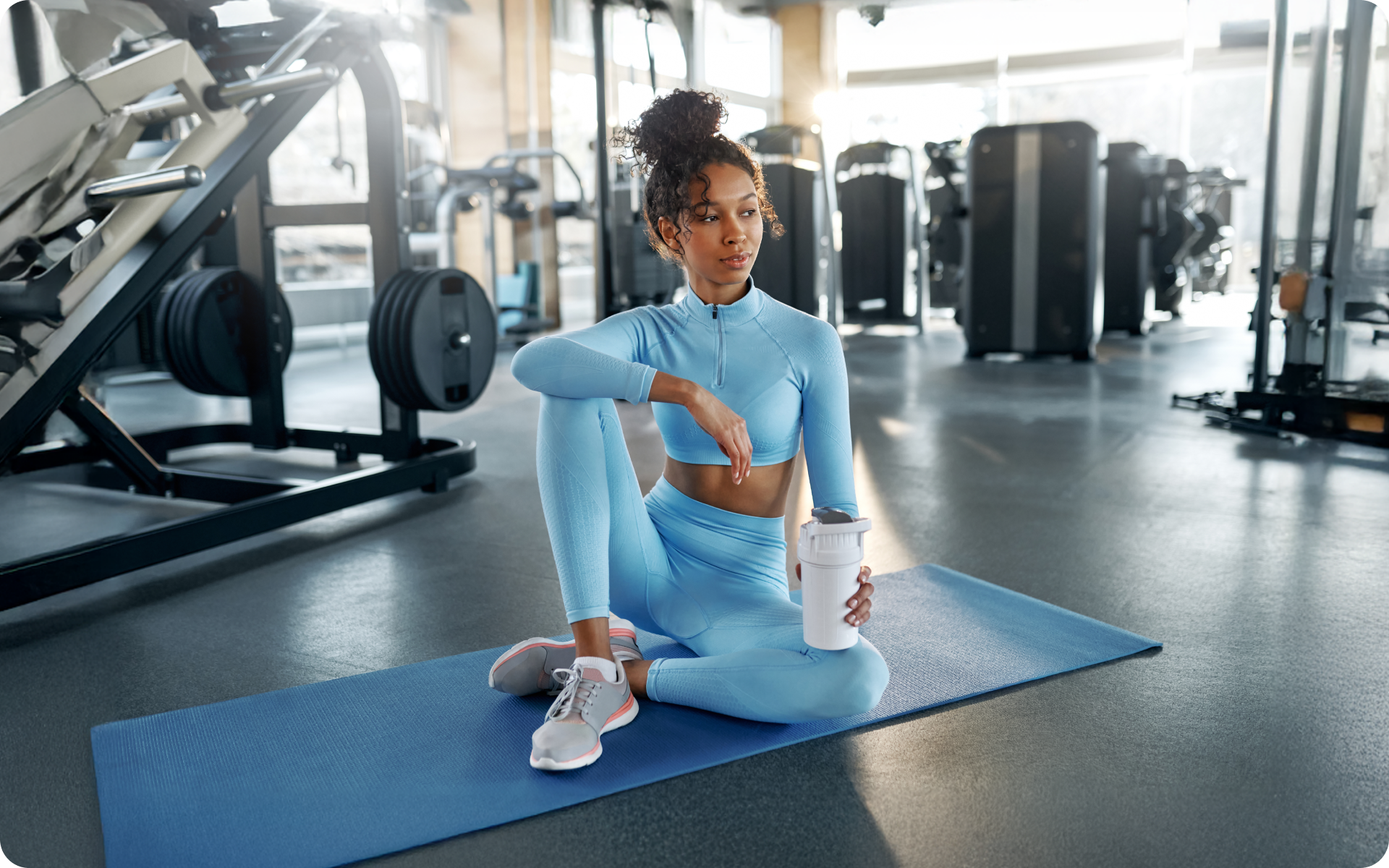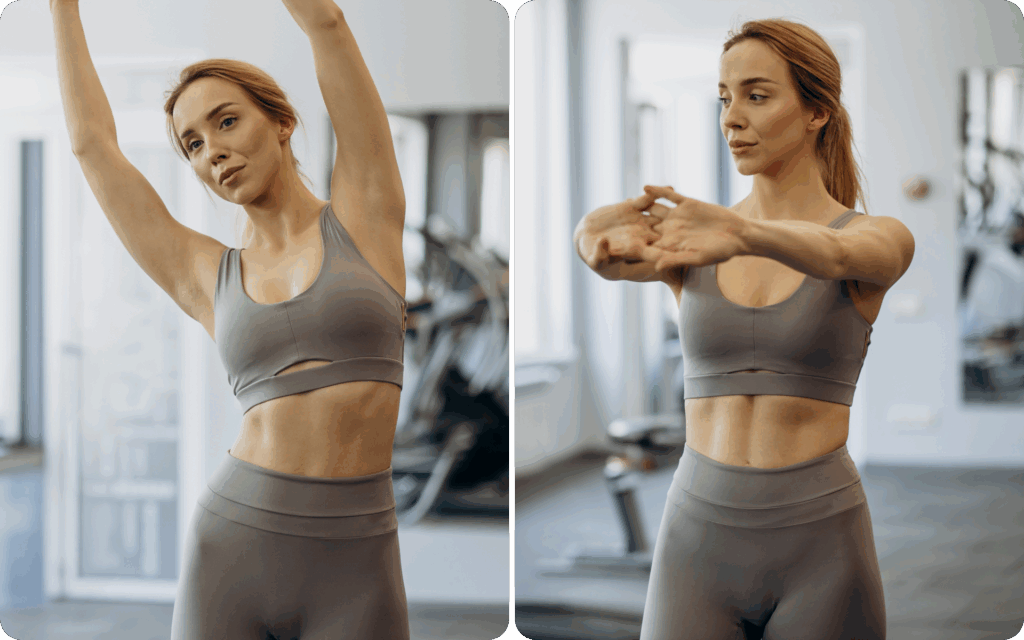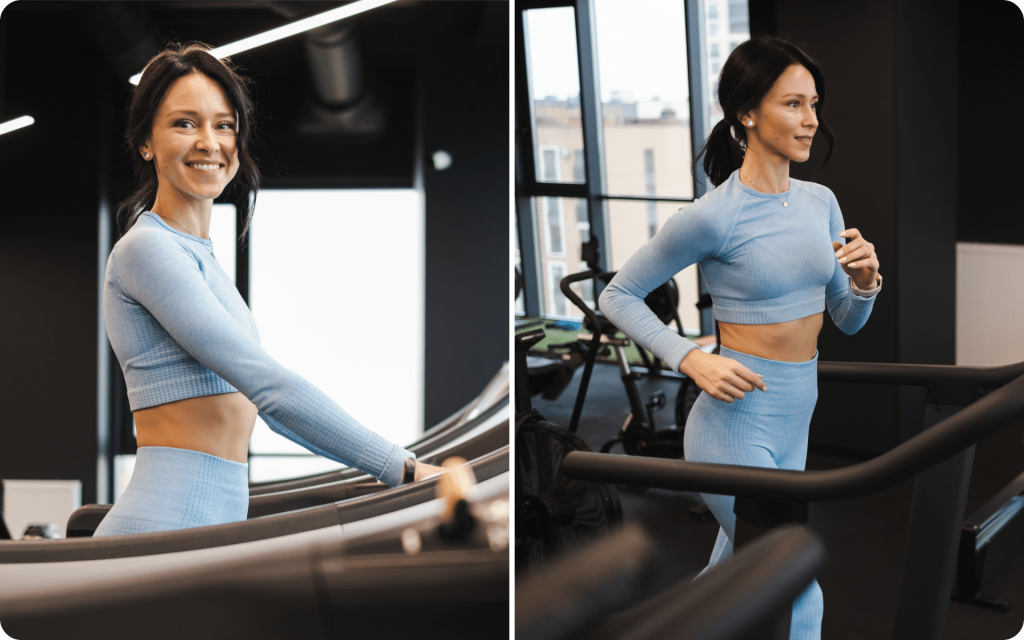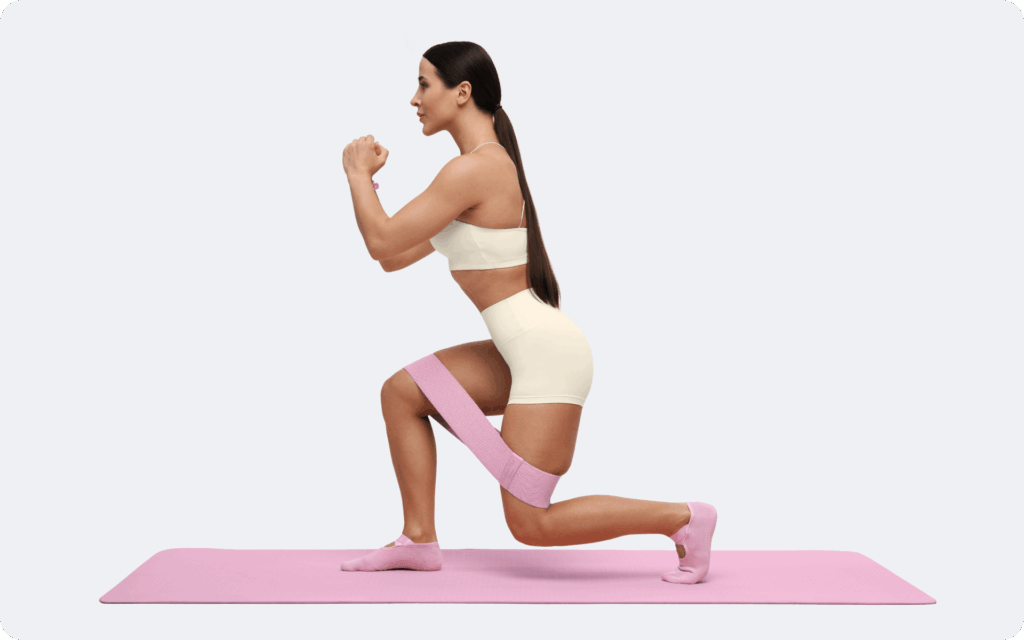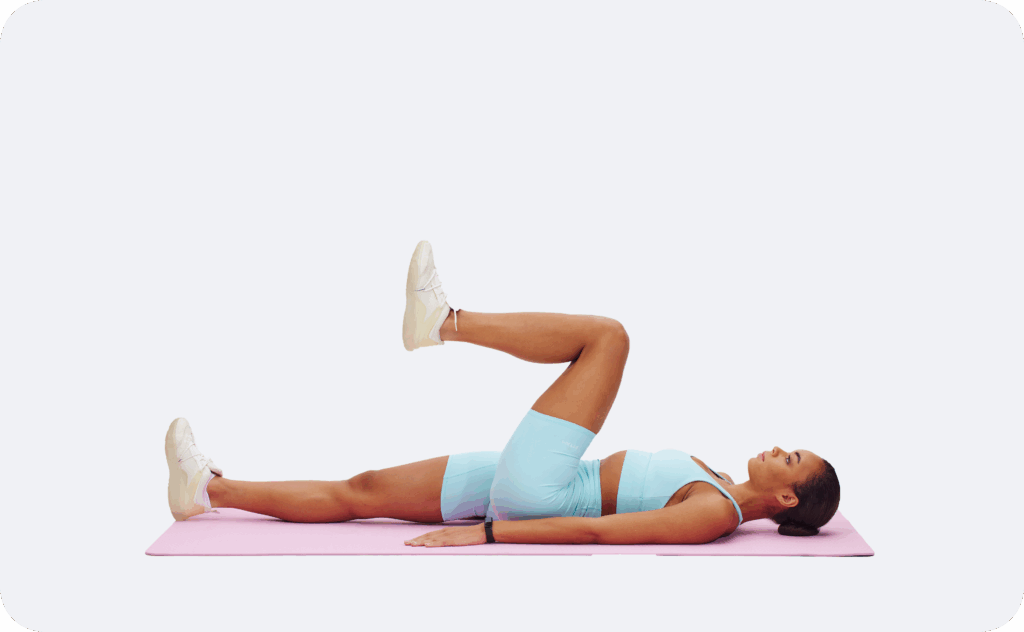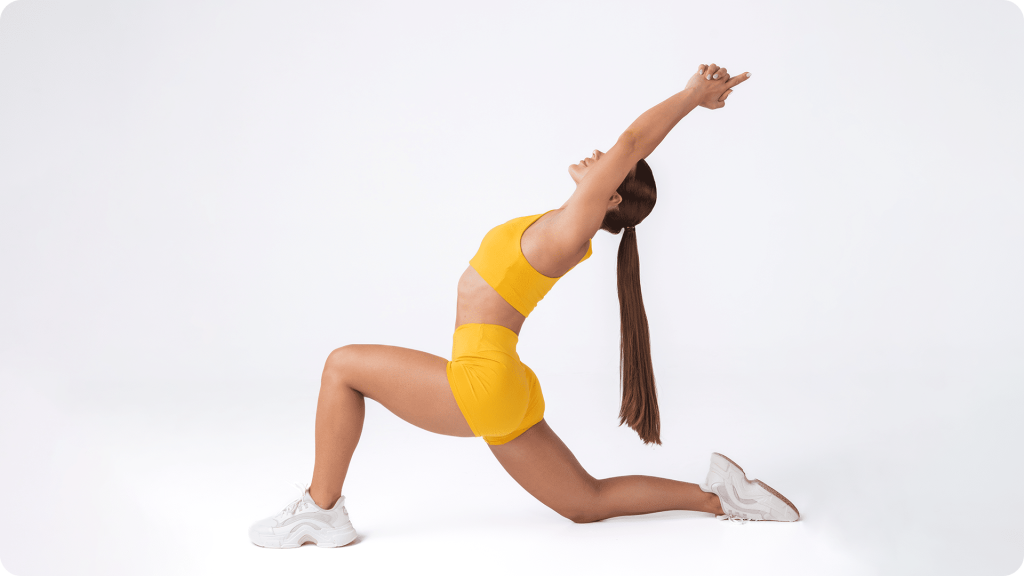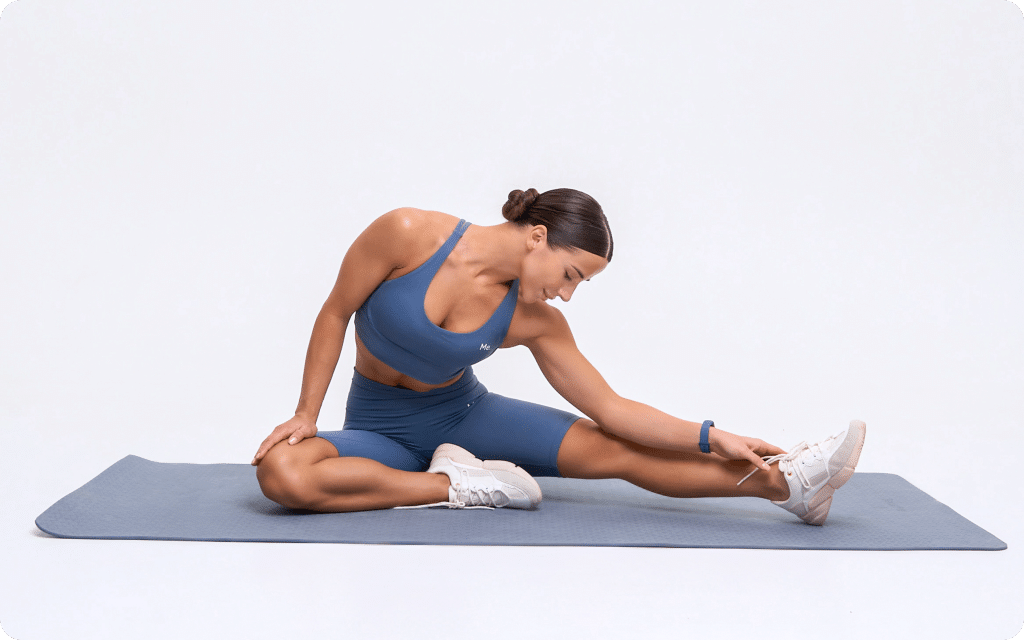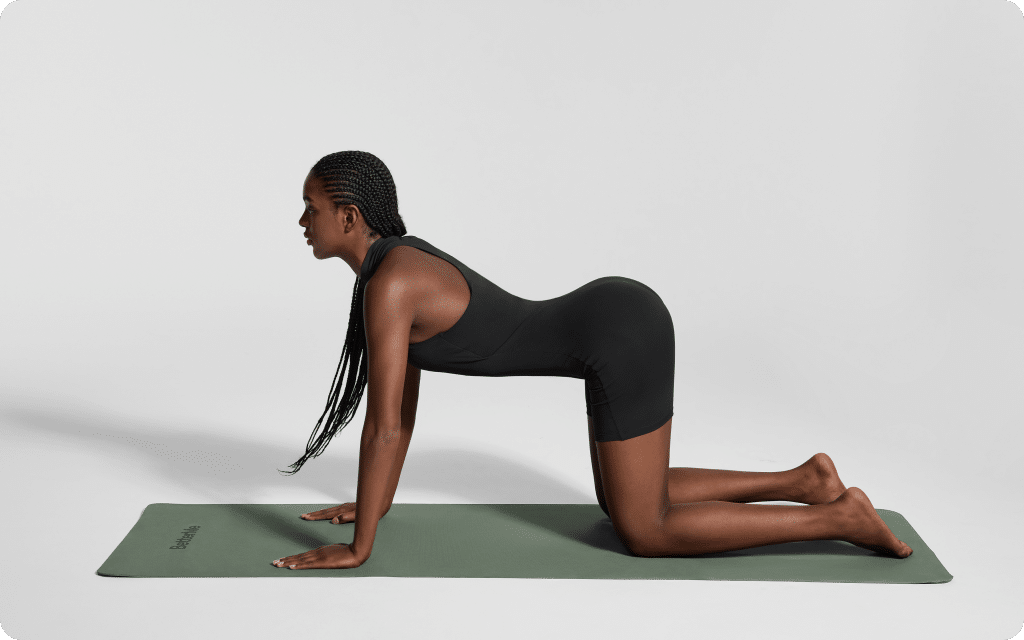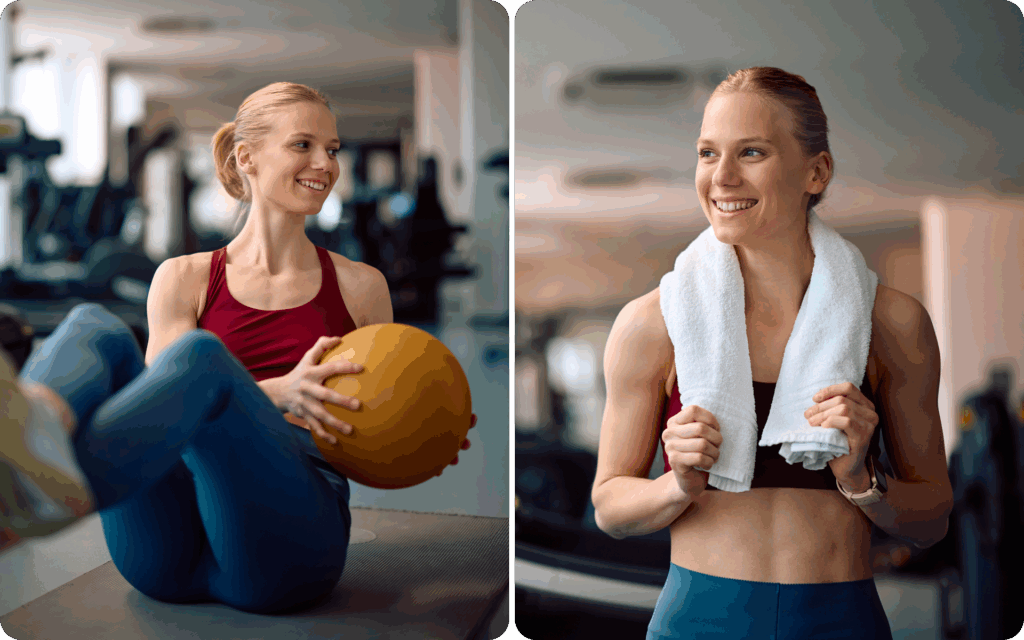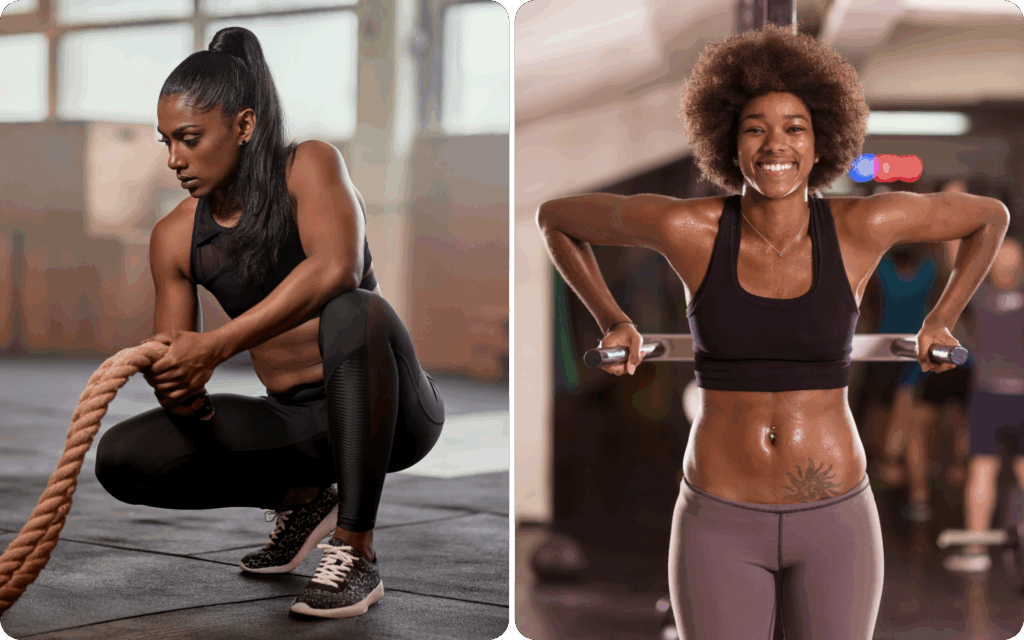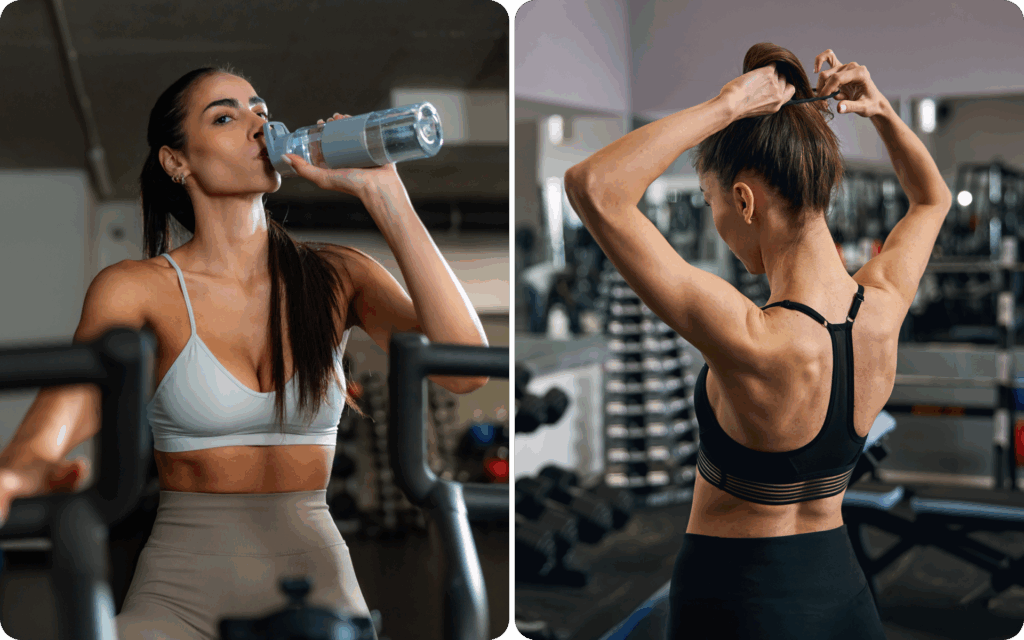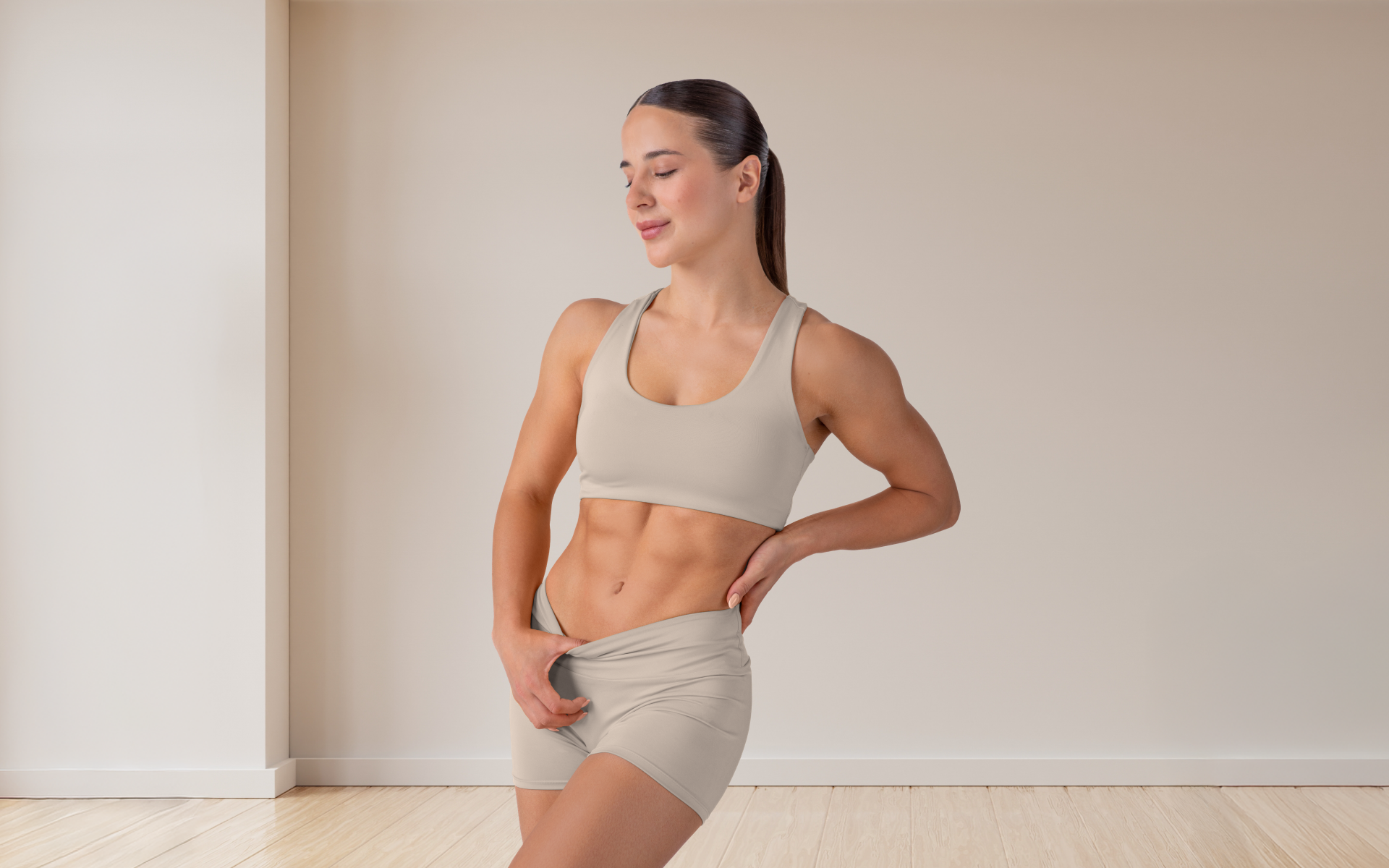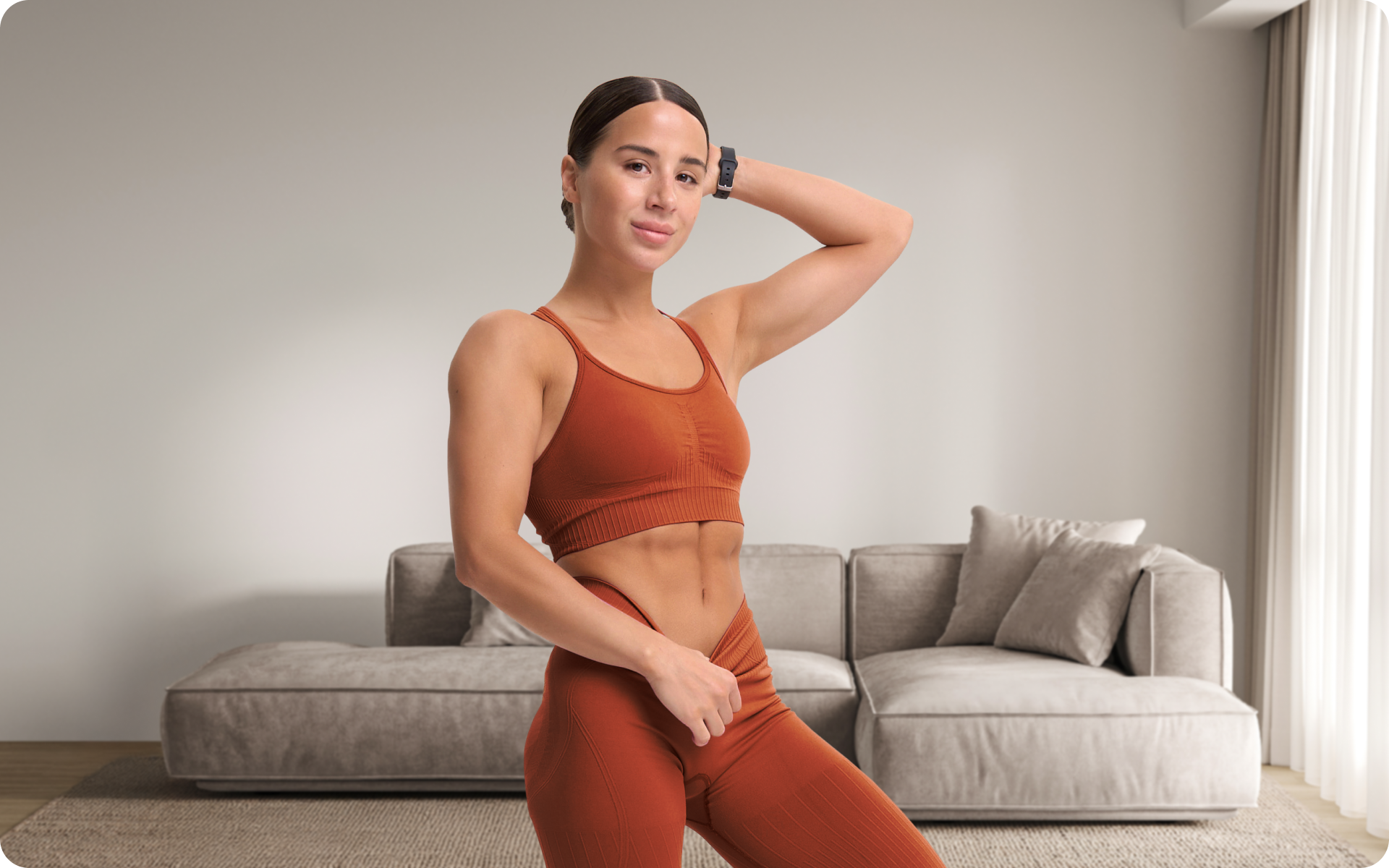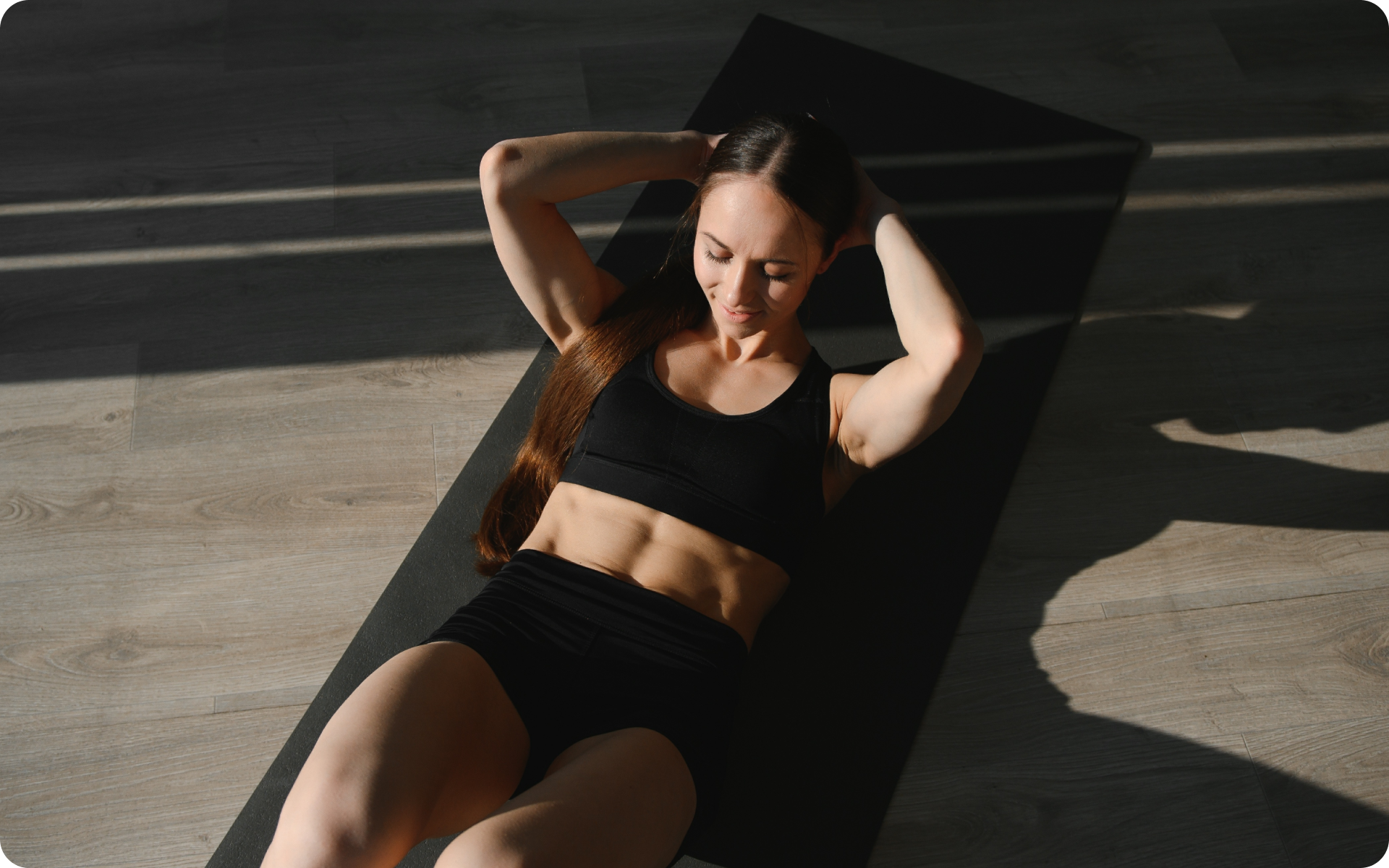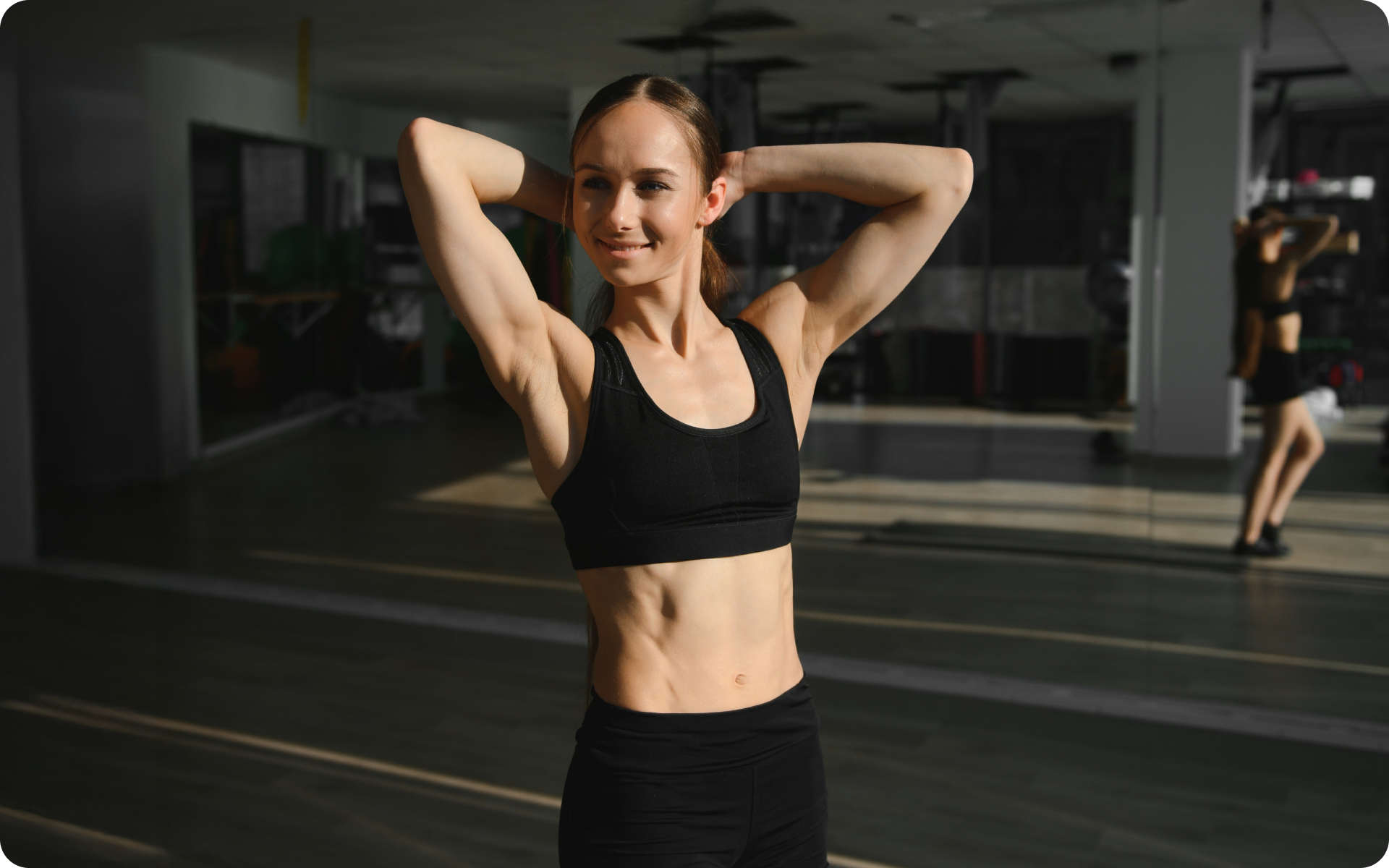When designing an effective training program, dedicating specific days to targeted goals can be a game-changer. A cardio and abs-focused workout day is no exception.
While many gym-goers prefer to combine these elements with other training sessions, sports science suggests that isolating them can yield better results.
Why? Because cardio and core training require distinct energy systems, movement patterns, and recovery needs that are often overshadowed when paired with strength or hypertrophy workouts (1).
Cardio sessions, for example, demand sustained cardiovascular effort, which can deplete the energy reserves needed for heavy lifting. Similarly, core training benefits from focused attention to ensure proper form and engagement – something that’s harder to achieve when fatigued from compound lifts.
By dedicating a day to these components, you allow your body to fully engage in their unique demands, optimize performance, and reduce the risk of overtraining.
Here’s how to structure a cardio and abs workout in the gym.
What’s an Example of a Cardio and Abs Workout in the Gym?
Below is a sample routine that is designed for a dedicated cardio and abs day. This structure balances energy use, skill development, and recovery. Adjust intensity and duration to match your experience and goals.
Cardio and Abs Sample Program
- Dynamic Warm-Up (5-7 minutes)
Perform dynamic stretches and light cardiovascular work to activate major muscle groups and increase circulation (2):
- Leg swings (front-to-back and side-to-side): 10 reps each direction per leg
- Arm circles: 15 reps forward, 15 reps backward
- Walking lunges with torso twist: 10 reps per side
- Hip circles: 10 reps each direction
- High knees or jump rope: 1-2 minutes
- Cardio Block
- High-intensity interval training (HIIT) on a treadmill, bike, or rower
- 6 rounds: 40 seconds work, 80 seconds rest (total approximately 12-15 minutes)
- Go at 85-90% max effort for the work interval
- Perform at low resistance/speed for recovery interval
- Abs Circuit
Complete 3 rounds, resting 60 seconds between rounds:
- Hanging knee raises: 12-15 reps
- Cable Pallof press: 10-12 reps per side
- Swiss ball crunch: 15-20 reps
- Dead bug: 10 reps per side
- Cool-Down (5 minutes)
Finish with light walking or cycling, followed by static stretches focused on commonly tight areas after cardio and abs:
- Standing hip flexor stretch: 30 seconds per side
- Seated hamstring stretch: 30 seconds per side
- Cat-cow stretch: 5-8 slow cycles
- Supine abdominal stretch (e.g. cobra pose): 30 seconds
BetterMe: Health Coaching app helps you achieve your body goals with ease and efficiency by helping to choose proper meal plans and effective workouts. Start using our app and you will see good results in a short time.
Exercise Guide for Cardio and Abs Exercises
Dynamic Stretches
- Leg Swings
Leg swings mobilize the hip flexors, glutes, and hamstrings while improving lower-body coordination. Hip mobility and dynamic flexibility from leg swings support efficient running and powerful leg drive.
How to do it:
- Stand tall beside a wall or sturdy surface for support.
- Swing one leg forward and backward with a straight knee, remaining within a pain-free range.
- Perform 10 reps, then switch to side-to-side swings across your body for 10 reps.
- Repeat on the other leg.
- Arm Circles
Arm circles activate the shoulders and upper back, boosting blood flow to the rotator cuff and preparing the upper body for arm movement during cardio or abs training.
How to do it:
- Stand with your arms extended out to the sides at shoulder height.
- Make small circles forward for 15 reps, then backward for 15 reps.
- Maintain a tall posture without shrugging your shoulders.
- Walking Lunges with Torso Twist
This dynamic move integrates hip and knee mobility with core rotation, improving total body warm-up and functional movement patterns.
How to do it:
- Step forward with your right foot into a lunge.
- Lower your left knee toward the floor while twisting your torso gently toward the right.
- Return to center, step forward with your left foot, and twist left.
- Continue alternating for 10 reps per side.
- Hip Circles
Hip circles unlock rotational mobility at the hip joint, which is essential for running, squatting, and twisting actions.
How to do it:
- Stand with your feet hip-width apart and your hands on your hips.
- Make large, controlled circles with your hips in one direction for 10 reps, then switch directions.
- High Knees or Jump Rope
These moves elevate heart rate and dynamically loosen up the lower body while priming the nervous system for more intense activity.
How to do it:
- For high knees, jog in place, lifting your knees as high as possible and pumping your arms.
- For jump rope, keep your elbows tucked, turning the rope with quick wrists and small jumps.
- Hanging Knee Raise
The hanging knee raise challenges the rectus abdominis and hip flexors, promoting control and stability throughout the trunk. It also engages grip strength and shoulder stabilizers.
How to do it:
- Hang from a pull-up bar with your arms fully extended and your shoulders away from your ears.
- Bracing your core, raise your knees toward your chest with control.
- Pause at the top, keeping your pelvis tucked.
- Lower your legs slowly to the starting position without swinging your body.
- Cable Pallof Press
This anti-rotation movement builds strength in the obliques and deep core muscles, enhancing lumbar stability and resisting unwanted twisting.
How to do it:
- Stand perpendicular to a cable machine, holding the handle with both hands at chest height.
- Step away to create tension on the cable with your feet hip-width apart and a slight knee bend.
- Press the handle straight out from your chest, engaging your core to prevent rotation.
- Hold briefly, then return your hands to your chest; repeat all reps on one side before switching.
- Swiss Ball Crunch
Swiss ball crunches target the upper and lower fibers of the rectus abdominis, increasing range of motion compared to floor crunches and engaging stabilizers.
How to do it:
- Sit on a Swiss ball and walk your feet forward to roll the ball under your lower back.
- Cross your arms over your chest or support your head gently.
- Engage your core and curl your torso up, lifting your shoulders off the ball.
- Pause briefly at the top, then lower under control.
- Dead Bug
This exercise reinforces core stability while improving coordination between limbs and trunk, training anti-extension and proper spinal positioning.
How to do it:
- Lie on your back with your arms extended toward the ceiling and your knees bent at 90 degrees above your hips.
- Flatten your lower back against the floor and brace your core.
- Slowly lower one arm and the opposite leg toward the floor, keeping your back flat.
- Return to the start and repeat on the other side, alternating sides for all repetitions.
Static Stretches
- Standing Hip Flexor Stretch
This stretch targets the hip flexors and lower abdominal region, counteracting shortening from sitting or running.
How to do it:
- Stand and step one foot back into a staggered stance.
- Bend your front knee and gently push your hips forward.
- Tuck your pelvis under to enhance the stretch in the rear hip flexor.
- Hold for 30 seconds, then switch sides.
- Seated Hamstring Stretch
Effective for elongating the hamstrings and relieving post-cardio tightness in the back of the leg.
How to do it:
- Sit with one leg extended straight and the other foot tucked in toward your thigh.
- Keeping your back straight, hinge forward at the hips over the extended leg until you feel a gentle stretch.
- Hold for 30 seconds, then switch sides.
- Cat-Cow Stretch
A controlled spinal movement that enhances mobility through the back and core, supporting postural reset after ab work.
How to do it:
- Start on your hands and knees, your wrists under your shoulders and your knees under your hips.
- Inhale and arch your back (cow), lifting your tailbone and head.
- Exhale and round your spine (cat), tucking your chin and drawing your belly in.
- Flow slowly for 5-8 cycles.
- Supine Abdominal Stretch (Cobra Pose)
Cobra pose lengthens the abdominal wall, encouraging extension after repetitive flexion exercises.
How to do it:
- Lie on your stomach with your legs straight and your hands below your shoulders.
- Press your palms into the floor, lifting your chest gently while keeping your hips in contact with the mat.
- Hold where comfortable for up to 30 seconds, breathing deeply.
Read more: Is Pilates Mobility Training? Exploring The Connection Between Pilates And Mobility
Should You Do Cardio if You Want Abs?
Cardio is a valuable component in any program that’s designed to reveal abdominal definition. Fundamentally, visible abs are determined by two main factors: the development of your abdominal muscles (the rectus abdominis, obliques, and deeper core stabilizers) and the amount of subcutaneous fat that covers them (3). You may have well-developed abs, but if they’re covered by a layer of fat, they won’t be visible.
Cardiovascular exercise – whether steady-state or intervals – helps increase your daily caloric expenditure (4). This can contribute to an overall calorie deficit, which is a prerequisite for fat loss (5). From a physiological perspective, cardio also improves your body’s ability to deliver oxygen and nutrients to working muscles (6), supporting overall conditioning and recovery.
That being said, settling on which aerobic exercise to do is never easy. Our best cardio for weight loss guide highlights science-backed routines that elevate your heart rate, burn fat efficiently, and fit seamlessly into any fitness level or schedule.
It’s important to note that cardio alone isn’t the only answer. While it supports fat reduction, achieving visible abs is also dependent on nutrition, genetics, and strength training. The best results come from a combination of cardio, resistance-based core exercises, and dietary control.
Will I Get Abs if I Just Do Cardio?
Doing cardio alone is rarely enough to achieve the strong, defined abs most people envision. Cardio may lower overall body fat percentages, but the abdominal region is stubborn. Genetics often determines where fat is lost most readily (7). For some, abdominal fat is among the last to go.
Furthermore, having “abs” is about more than just fat levels – it’s also about muscular development. Like any other muscle group, the rectus abdominis and surrounding core muscles need hypertrophy (growth). This comes from targeted resistance training using a mix of movement patterns: flexion, rotation, stabilization, and anti-extension.
- Flexion: These are movements where the spine bends forward, actively engaging the rectus abdominis. Classic examples include crunches, hanging knee raises, and cable crunches.
- Rotation: Rotational exercises train the obliques and improve your ability to twist through the torso. Russian twists, cable woodchoppers, and medicine ball throws are good examples.
- Stabilization: These focus on maintaining a strong, steady posture against external forces, building endurance across the deep core muscles. Planks, dead bugs, and Pallof presses fit this category.
- Anti-Extension: Here, you resist the spine’s tendency to arch, which challenges the anterior core muscles. Examples include ab wheel rollouts, body saws, and stability ball rollouts.
Read more: Killer 30-Minute Ab Workout for Busy People
Can I Do Abs and Cardio Together?
Combining abs and cardio in a single gym session is possible and for many individuals, it can be an efficient way to target endurance and core strength.
From a physiological perspective, cardio workouts and abdominal training engage different primary energy systems. Cardio, such as running or cycling, predominantly challenges the cardiovascular system and taps into aerobic pathways (6). Abdominal work typically relies on shorter bursts of anaerobic effort, particularly if it’s resistance-based.
However, the way you structure your session will significantly impact the outcomes.
If building core strength and muscular endurance is your main focus, consider training abs before cardio while you’re fresh and can concentrate on quality movements.
If your goal is fat loss or cardiovascular conditioning, performing cardio first may make sense, as it allows you to maximize energy output on aerobic exercise before moving to focused ab work.
In addition, you should avoid excessively fatiguing the core prior to compound movements that require stability, such as heavy lifts, on other training days. When combining these workouts, pay special attention to exercise sequencing to prevent unnecessary fatigue or reduced form.
A sample session could look like this:
- Start with a light dynamic warm-up (5-10 minutes).
- Perform 15-20 minutes of moderate to vigorous cardio.
- Transition to focused core work, cycling through movements that target flexion, rotation, stabilization, and anti-extension.
- End with gentle stretching or mobility work to aid recovery.
Finally, listen to your body. High-intensity or high-volume sessions increase overall fatigue. Matching volume and intensity to your fitness level helps safeguard against overtraining and supports ongoing progress.
Whether you’re a workout beast or just a beginner making your first foray into the world of fitness and dieting – BetterMe has a lot to offer to both newbies and experts! Install the app and experience the versatility first-hand!
Should I Do Cardio Before or After an Abs Workout?
You can do cardio before or after your abs workout, depending on your fitness goals and preferences.
Some people prefer to do cardio before their abs workout as it helps elevate their heart rate, warm up their muscles, and increase blood flow to the working muscles. This can also help with fat burning during the workout (8). However, doing intense cardio before an abs workout may fatigue your core muscles and affect your form during the exercises.
On the other hand, some people prefer to do an abs workout first as it allows them to focus on engaging and strengthening their core without being pre-fatigued from cardio. In addition, having a strong core can improve overall performance and prevent injury during cardio exercises.
Ultimately, the best approach is to listen to your body. Which of the two options feels more comfortable and effective for you? Experiment with different routines and find the one that works best for your body.
Is Cardio and Abs Enough to Lose Weight?
Cardio and abs workouts can play a valuable role in a weight loss program, but relying on these two forms of exercise alone often isn’t enough for sustainable results.
Weight loss fundamentally comes down to creating a consistent energy deficit, which means expending more calories than you consume (5). While cardio can help you burn calories and improve cardiovascular health, and abs exercises will strengthen and define your core muscles, these alone don’t guarantee a significant change in body fat.
Nutrition is a central piece of the puzzle. Evidence has consistently shown that dietary habits have the greatest impact on fat loss. Focusing on whole, nutrient-dense foods, managing portion sizes, and creating balanced meals will support your calorie goals and help preserve muscle mass while losing weight (9, 10).
Strength training is another essential factor. Incorporating total-body resistance exercises helps you build and maintain lean muscle, which increases your resting metabolic rate – the number of calories you burn at rest (11). This means more efficient and long-term fat loss compared to cardio and abs training alone.
A holistic weight loss approach combines:
- Regular cardiovascular activity for heart health and calorie expenditure
- Consistent strength training to build and retain muscle
- Focused core work to enhance stability and function
- Mindful nutrition to ensure an appropriate calorie deficit
- Attention to recovery, sleep, and stress management to support metabolic health
By addressing all these components, you provide your body the best environment for safe, lasting weight loss while supporting both your physical and mental well-being.
Is It OK to Do Cardio and Abs Every Day?
If performed at a moderate intensity and varied across modalities (such as steady state, interval training, or low-impact activities), daily cardio can be appropriate for some individuals. It supports cardiovascular health, manages stress, and can contribute to daily energy expenditure.
However, pushing intense cardio sessions without rest can lead to overtraining, elevated stress hormones, and eventually decrease performance or increase injury risk (12).
When it comes to abs, as with any muscle group, the core muscles require time to recover and adapt. Overworking the core with high-intensity or repetitive exercises every day may lead to fatigue, impaired muscle growth, or strain.
Short, low-volume core sessions that focus on technique and stabilization can be performed more frequently, particularly when integrated with movement-based exercises. However, targeted, challenging ab routines are best done 3-4 times per week as this allows for proper recovery and adaptation (13).
It’s essential to listen to your body. Signs such as persistent soreness, declining performance, disrupted sleep, or lack of motivation may indicate you’re not recovering adequately (12).
Most importantly, your routine should be sustainable in the long term. Incorporate rest days, alternate muscle groups, or vary your cardio intensity to give your body and nervous system a chance to recover and grow.
In short: Daily movement is beneficial, but a smarter approach balances effort, recovery, and variation. Structure your cardio and abs sessions according to your needs, experience, and how your body responds, prioritizing sustainable progress and injury prevention.
Cardio pairs well with core training, mobility work, or low-intensity strength sessions, as these can complement cardiovascular benefits without leading to excessive fatigue or compromising your recovery. Yes, ab workouts strengthen your core and could potentially improve posture, which everyone needs whether they have belly fat or not. However, spot reduction isn’t possible (14). Losing belly fat requires an overall calorie deficit achieved through diet, cardio, and full-body resistance training. No matter the fitness level, the importance of core strength remains undisputed. With this easy core exercises compilation, you’ll find accessible movements that improve stability, support posture, and build a solid foundation for all types of physical activity. A general recommendation is 150-300 minutes of moderate-intensity or 75-150 minutes of vigorous-intensity cardio per week to support fat loss (15), although genetics, diet, and overall activity level also play key roles. High-intensity interval training (HIIT) and activities that engage the core, such as rowing, running, cycling, or swimming, can boost calorie burn and help develop visible abs when combined with proper nutrition and resistance work.Frequently Asked Questions
What should I pair cardio with?
Should I do ab workouts if I have belly fat?
How much cardio do I need for abs?
What cardio is best for abs?
The Bottom Line
A cardio and abs workout can be a great way to improve overall fitness and achieve your desired results. By combining these two types of exercises, you can strengthen your core, burn fat, and improve cardiovascular health all at the same time.
However, it’s important to listen to your body and find a routine that works best for you. Whether you prefer to do cardio before or after an abs workout, the key is consistency and finding a balanced approach that allows you to reach your fitness goals safely and effectively.
DISCLAIMER:
This article is intended for general informational purposes only and does not serve to address individual circumstances. It is not a substitute for professional advice or help and should not be relied on for making any kind of decision-making. Any action taken as a direct or indirect result of the information in this article is entirely at your own risk and is your sole responsibility.
BetterMe, its content staff, and its medical advisors accept no responsibility for inaccuracies, errors, misstatements, inconsistencies, or omissions and specifically disclaim any liability, loss or risk, personal, professional or otherwise, which may be incurred as a consequence, directly or indirectly, of the use and/or application of any content.
You should always seek the advice of your physician or other qualified health provider with any questions you may have regarding a medical condition or your specific situation. Never disregard professional medical advice or delay seeking it because of BetterMe content. If you suspect or think you may have a medical emergency, call your doctor.
SOURCES:
- Understanding energy systems training (n.d., us.humankinetics.com)
- The effect of warm-ups with stretching on the isokinetic moments of collegiate men (2018, pmc.ncbi.nlm.nih.gov)
- SuperAbs Resource Manual (n.d., unm.edu)
- Effect of high-intensity interval training compared to moderate-intensity continuous training on body composition and insulin sensitivity in overweight and obese adults: A systematic review and meta-analysis (2023, sciencedirect.com)
- Fat Loss Depends on Energy Deficit Only, Independently of the Method for Weight Loss (2007, karger.com)
- Effects of Exercise to Improve Cardiovascular Health (2019, frontiersin.org)
- Genetics of Body Fat Distribution: Comparative Analyses in Populations with European, Asian and African Ancestries (2021, mdpi.com)
- Warm Up II (2012, link.springer.com)
- Optimal Diet Strategies for Weight Loss and Weight Loss Maintenance (2020, pmc.ncbi.nlm.nih.gov)
- Preserving Healthy Muscle during Weight Loss (2017, pubmed.ncbi.nlm.nih.gov)
- Increasing muscle mass to improve metabolism (2013, pmc.ncbi.nlm.nih.gov)
- Are you getting too much exercise? (2024, medlineplus.gov)
- A Systematic Review of the Effects of Different Resistance Training Volumes on Muscle Hypertrophy (2022, jhk.termedia.pl)
- Spot reduction: why targeting weight loss to a specific area is a myth (2023, sydney.edu.au)
- Physical activity guidelines for adults aged 19 to 64 (2024, nhs.uk)
